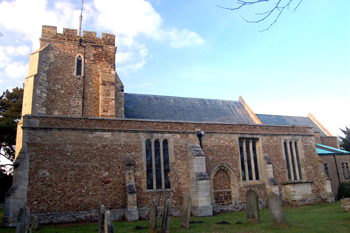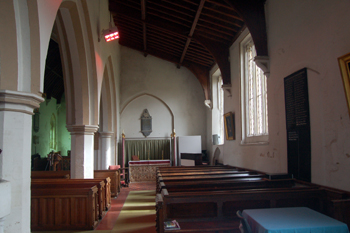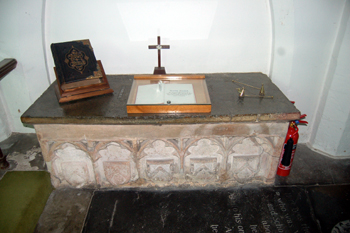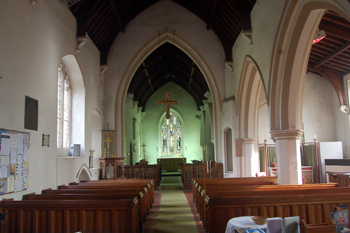Roxton Church Architecture

Roxton church from the south March 2010
The earliest known incumbent of Roxton dates to 1235, though the village is mentioned in Domesday Book of 1086 and it is reasonable to assume that there was a church in the parish before the Norman Conquest of 1066. The present church of Saint Mary is a largely medieval structure, built of brown cobbles.

The south aisle looking east March 2010
The oldest surviving part of the church is the south arcade, separating the south aisle from the nave, built around 1300. The nave and chancel are also 14th century in date, though a little later. Part of the north wall of the nave may be older than 1300 but this cannot be stated for certain. Clearly there must have been an existing nave for the aisle to be attached to. It was common for early churches to contain simply a chancel and a nave and, sometimes, a west tower and it is quite likely that the aisle was added about 1300 and then the nave and chancel either partially or completely rebuilt, as money allowed, to match the new aisle. No north aisle was ever built.

The south side lower section of the chancel screen March 2010
About 1330 a south chapel was added to the chancel. This was later pulled down and the modern vestry and organ chamber stand on the site.

The north side lower section of the chancel screen March 2010
The west tower dates to the 15th century. The chancel screen, restored in 1974, also dates from the 15th century.

Medieval tomb chest March 2010
Also belonging to that century are a tomb chest of an unknown woman and another tomb chest, of Roger Hunt, who died in 1438. When the church was restored in 1848 some medieval brasses were lost. The brass of John Fage of Chawston, who died about 1400, was late rediscovered and placed in the wall of the chancel.
 Interior looking east March 2010
Interior looking east March 2010